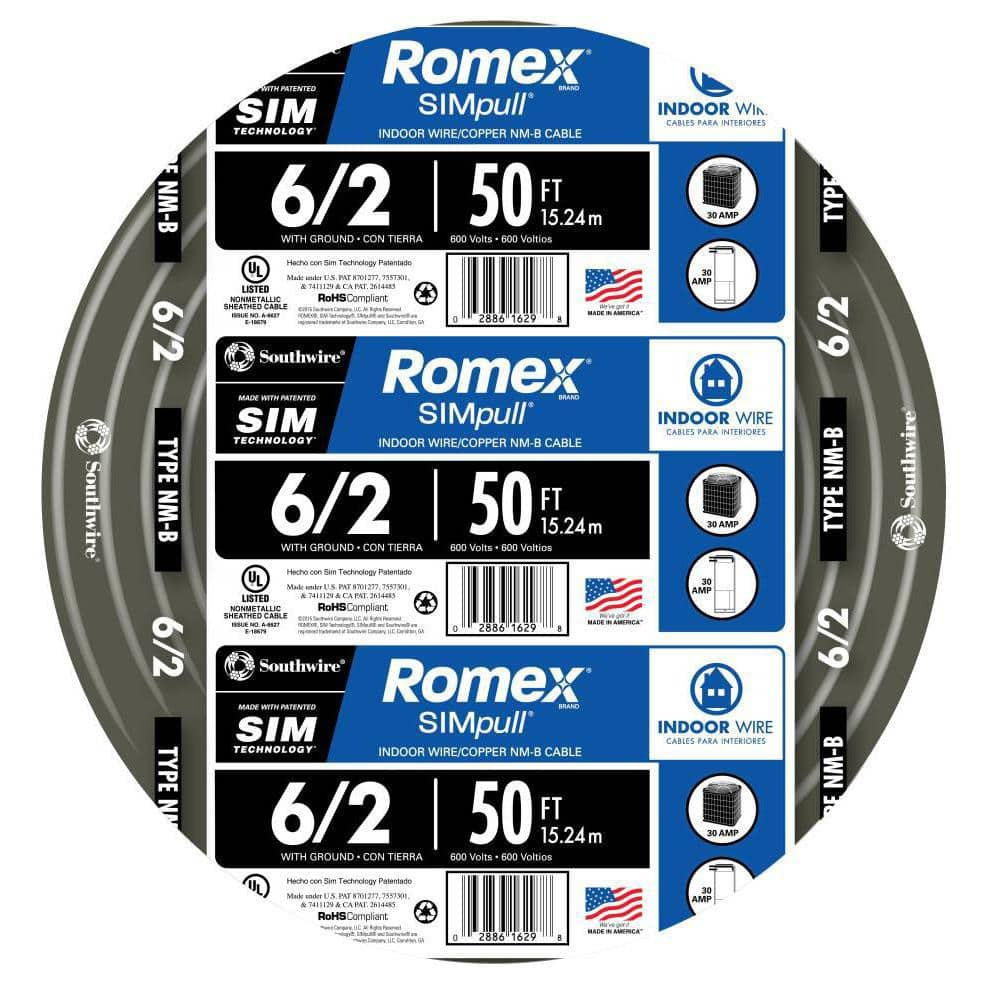Yeah wasn't even thinking about it during his install. But I specifically told him that the charger needs a 60 amp breaker since the car will be charging at 48 amps according to the manual. I guess I'll keep it at 40 for now until I get around to replacing the small run with THHN. I could probably even just set the car to 44amps since 44x1.25 is the rated 55amps. Not that it makes a difference though. A little over 2 hours to recharge daily isn't bad at all.*sigh* 6 gauge Romex isn't rated high enough for a 60A circuit, so that would have to be set as a 50A circuit unless you do that change to THHN in conduit.
Welcome to Tesla Motors Club
Discuss Tesla's Model S, Model 3, Model X, Model Y, Cybertruck, Roadster and More.
Register
Install the app
How to install the app on iOS
You can install our site as a web app on your iOS device by utilizing the Add to Home Screen feature in Safari. Please see this thread for more details on this.
Note: This feature may not be available in some browsers.
-
Want to remove ads? Register an account and login to see fewer ads, and become a Supporting Member to remove almost all ads.
You are using an out of date browser. It may not display this or other websites correctly.
You should upgrade or use an alternative browser.
You should upgrade or use an alternative browser.
60 amp or 50 amp breaker for Tesla wall charger?
- Thread starter Broncobren
- Start date
Hmm looking at Romex vs THHN I see that newer Romex is rated at 90c now so THHN and Romex both appear to have the same rating according to what's sold at Homedepot. I thought Romex was 60C.*sigh* 6 gauge Romex isn't rated high enough for a 60A circuit, so that would have to be set as a 50A circuit unless you do that change to THHN in conduit.
Where do you think you are seeing that?Hmm looking at Romex vs THHN I see that newer Romex is rated at 90c now
No, they're not.so THHN and Romex both appear to have the same rating according to what's sold at Homedepot.
It is.I thought Romex was 60C.
I think I know what you are looking at that's giving this idea. If you read the specifications for Romex cable, it does list that the individual wires inside the bundled cable are jacketed with insulation that is 90 degree rated. But when you look at allowed ampacity tables, it shows that using the NM-B cable as a whole has to use the 60 degree C rating. Here's an example of that table:

Cerrowire Resources - Ampacity Charts
Ampacity is the maximum current that a conductor can carry continuously under the conditions of use without exceeding its temperature rating. Cerrowire's ampacity chart helps calculate the load requirement for a circuit.
And for @LoudMusic 's question, that's a good table to use to see the actual ratings. The table you were linking to is for calculating voltage drop. And it's showing it just listed by current flow, but not what the wire rating level is.
If you Google for "ampacity table", that's always the first link that comes up.
It was just in the description. I'll limit myself to 44amps until I get around to upgrading it.Where do you think you are seeing that?
It's funny to that you look at the frequently bought together with a 60amp breaker. I wonder how many Tesla chargers are out there with these types of setups?

Southwire 50 ft. 6/2 Stranded Romex SIMpull CU NM-B W/G Wire 28894422 - The Home Depot
The Romex Type NM-B Copper Building Wire, featuring a patented SIMpull Cable Jacket, offers a hassle-free experience during installation, pulling, and stripping. Primarily intended for residential building
www.homedepot.com
It was just in the description. I'll limit myself to 44amps until I get around to upgrading it.
It's funny to that you look at the frequently bought together with a 60amp breaker. I wonder how many Tesla chargers are out there with these types of setups?

Southwire 50 ft. 6/2 Stranded Romex SIMpull CU NM-B W/G Wire 28894422 - The Home Depot
The Romex Type NM-B Copper Building Wire, featuring a patented SIMpull Cable Jacket, offers a hassle-free experience during installation, pulling, and stripping. Primarily intended for residential buildingwww.homedepot.com
It's also very commonly used with RVs, though they should be buying 50 amp breakers.
We have a couple 60 amp breakers in our new house - I think they are air conditioner units or the stove possibly? I need to review the electrician's notes.
MGB59
Member
The electrician used 6/2 romex inside a conduit? If so, that should not be done.Thinking about it I should probably bump up the wire to #6 THHN he used romex 6/2. I don't think certified electricians research EV charging enough.
Though 40amps would be plenty as well I drive 100miles per day and 48A puts it back in a little over 2 hours so a little longer makes no difference.
I can easily take care of the wire change myself. I just needed someone to trench the 100ft to my garage and add a panel I wanted that done by a professional.
There are many problems but that's not one of them. No conduit though just 6/2 Romex on the wall.The electrician used 6/2 romex inside a conduit? If so, that should not be done.
MGB59
Member
OK, thought it may be a heat issue inside the conduit. BTW: I shouldn't have said, "that should not be done", but I do not recommend it as romex does not dissipate heat as well as single strand 6 gauge wire. As a general rule, you must use larger conduit, to accommodate romex, so when factoring in the larger conduit needed, it is usually not cost effective to use. I am a contractor in California, here romex is generally used in wood framed homes, inside walls, with no conduit. It is not allowed outside, unless it is the UF variety of romex and is in conduit. Some areas consider a garage, "outdoors", others do not.There are many problems but that's not one of them. No conduit though just 6/2 Romex on the wall.
Phimosis
New Member
US electrical code states that continuous loads (expected to last longer than 3 hours), can only be run at 80% of the load rating for the circuit. Intermittent loads (expected to last less than 3 hours) can be run at the full rated capacity. EV chargers are categorically classified as "continuous load" devices (since they are expected to charge for 8 hours), so they are subject to the 80% rule, whereas a 12,000 watt search light (50 amps x 240 v) could be run on a 50 amp breaker for 2.99 hours in Phoenix AZ in 115 degree temperatures without undue risk of overheating and catching fire, as codes are usually written pretty conservatively. With that said, I had an electrician wire me in a NEMA 14-50 plug on a 50 amp breaker with 6 ga THHN wire and I'm using a charger that can be run at 40 amps on the NEMA 14-50 plug, or 48 amps if hard wired. I just told the phone app that it is hard wired, so it allows me to turn it up to 48A, even though I'm using a 50 amp plug in. So if I am charging for the full 8 hours in 65 degree F overnight temps, I usually run it at 43 amps for a cool 10.0 KW output, which makes charging math easy. If my battery is almost dead after coming home from work, but I want to go out shopping or to the gym, I turn it up to 48A and charge it for an hour or so, because it is less than 3 hours. Nothing ever gets hot. I've ran it like this for 2 years and never had a problem. Again, it is designed to be ran at 100% of rated load in the hottest parts of US during the middle of the summer, for up to 3 hours without overheating to failure.
Similar threads
- Replies
- 8
- Views
- 118
- Replies
- 9
- Views
- 2K
- Replies
- 5
- Views
- 166
- Replies
- 17
- Views
- 697
- Replies
- 12
- Views
- 401


